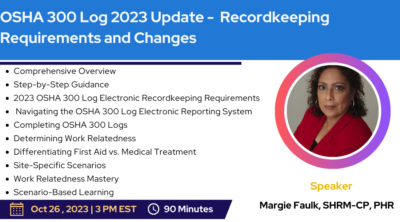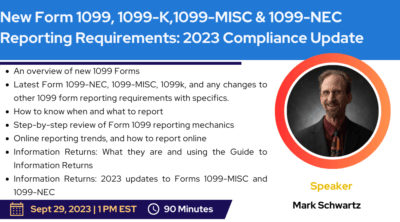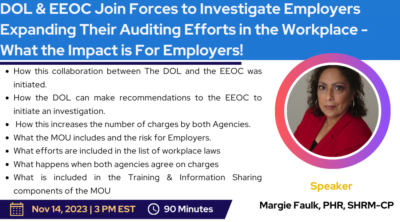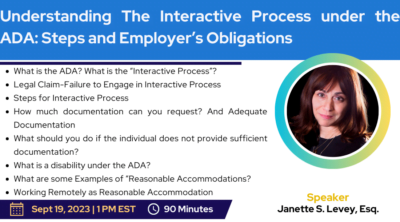Description
HRCI & SHRM Approved Webinar | 1.5 CEU Credits
If there’s ever a time to rethink your handbook, it’s now. The timeliness has less to do with the 2025 year — the obvious time to roll out a replacement handbook — and more to do with the wave of changes that recently swept the workplace based on the change in administration. It is clear that the changes expected by the new administration will impact the workplace including the Employee Handbook. The National Labor Relations Board (NLRB) now has submitted its new Employee Handbook changes that can make Employee Handbooks legally unlawful. The NLRB has the authority to monitor and make changes to employee handbooks for union and non-union workplaces.
Federal, State and Local regulations are in place and regulatory agencies are revving up audit focus for 2025 and beyond. Many state regulations and multi-state regulations are impacting which laws supersede federal regulations. Workers’ new expectations may clash with employers’ old policies. Policies that ban flexibility, certain policies as per the National Labor Relations Board, and concerted activity may feel frustratingly out of date. And yet, many organizations punt on handbook refreshes. I think a lot of companies don’t update their employee handbooks as often as they should.
With the shift to hybrid work/Remote work, organizations must set clear expectations around communication, and performance. Managers and associates both play a significant role in making [hybrid work] successful within their teams, and HR teams have an opportunity to provide tools and guidelines to make it even easier.
What will You Learn:
- Learn, identify, and prepare for employee handbook violations.
- Become aware of all the new regulations that will impact your company.
- Identify the most common employee handbook violations and how to mitigate them.
- How the Department of Labor (DOL), and Equal Employment Opportunity Commission (EEOC) adapted to the changes based on the results of the elections
- NLRB’s new Employee Handbook changes
- How to change regulations to be compliant with employee handbook policies
- Learn which regulatory agency will focus on which regulation and mitigate the risk
- Learn what policies will land them in hot water.
- What policies are “must have” for your employee handbook?
- Social media and the impact of penalties when employees choose to speak negatively about their Employer.
- Why Employers need to follow the National Labor Relations Board and why they should care about policies that can be unlawful with new requirements.
- How your managers/supervisors can be your ambassadors in workplace compliance or your downfall
- How training can be one of your “first line of defense” in litigation.
Why should You Attend:
Federal regulations are not the only changes that are expected. We have learned that State regulations have superseded the Federal regulations because the regulation with the most benefit for the employee supersedes them. Many states have several changes that impact employees in state-specific and multi-state locations. When you add remote workers, there are many changes that have to be in place where compliance is key.
Who should Attend:
- All Employers
- Business Owners
- Company Leadership
- Compliance professionals
- Payroll Administrators
- HR Professionals
- Managers/Supervisors
- Small Business Owners















